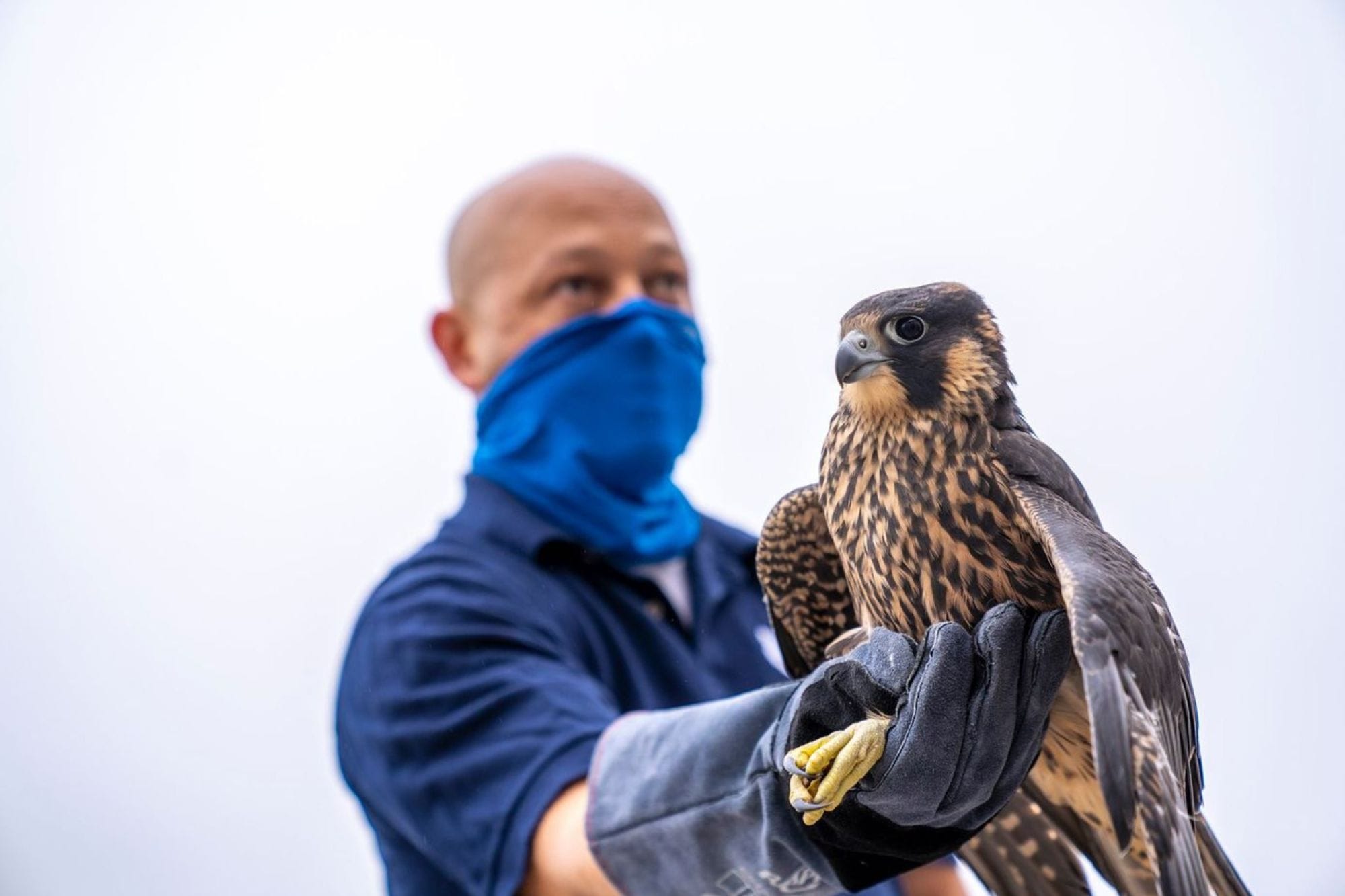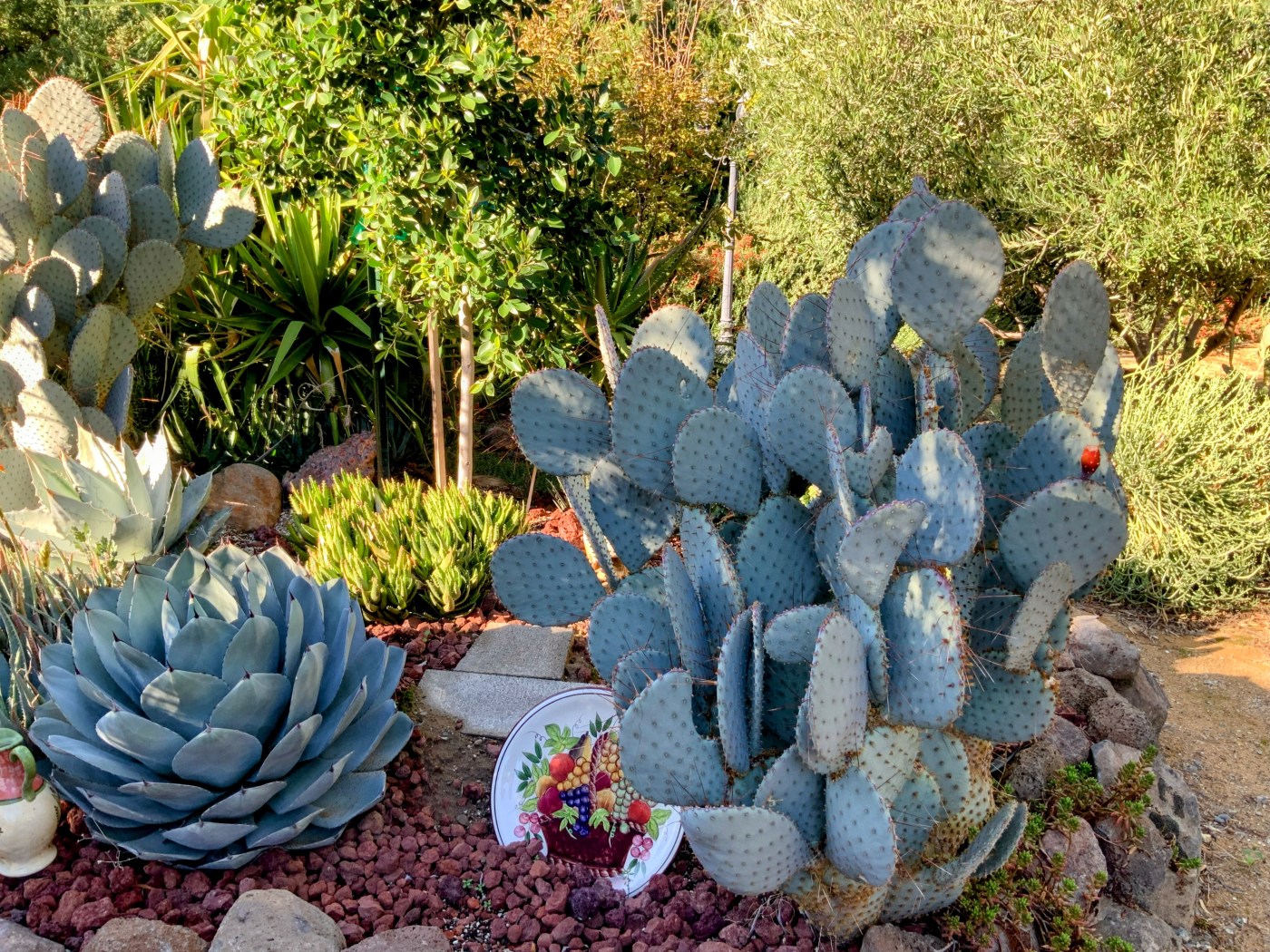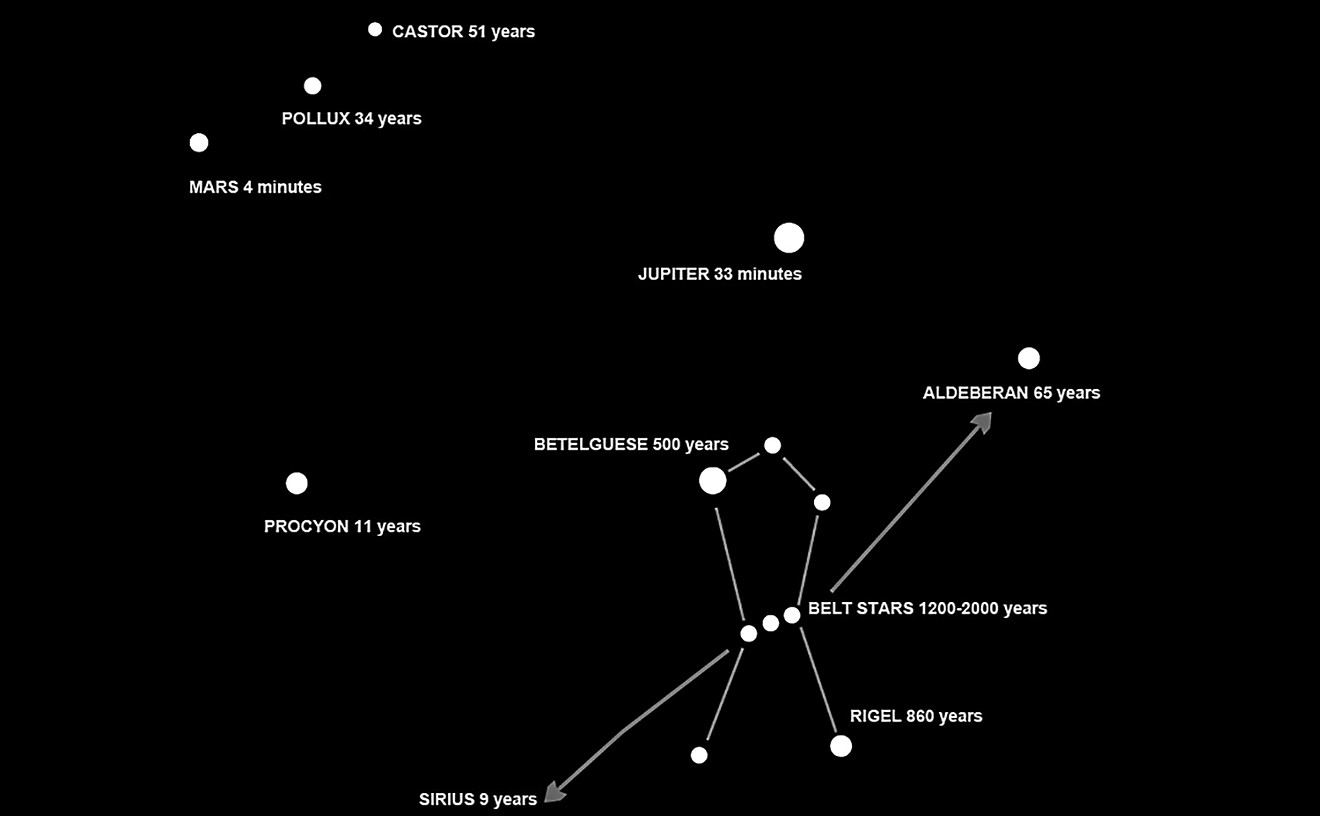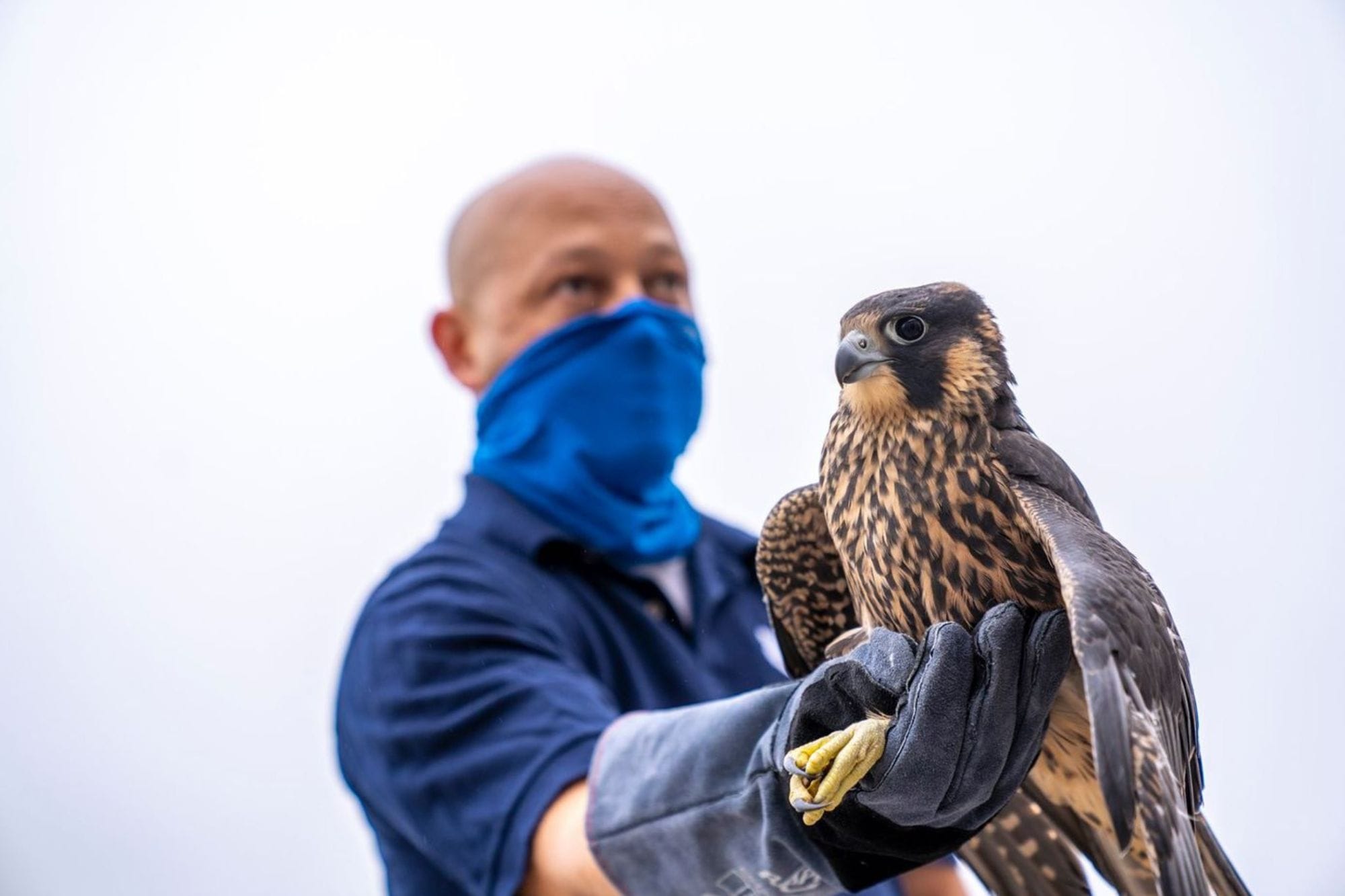Downtown Riverside’s Jailbirds: Peregrine Falcons Nest at the County Jail

Riverside is a great city for seeing interesting birds. It’s easy to see White Pelicans at Fairmont Park or Blue Grosbeaks at Hidden Valley at the appropriate time of the year. But you don’t need to go to a managed park or unmanaged wilderness to see some remarkable birds. All you need to do is to go to downtown Riverside (again, in the right season), stand at the northwest corner of Ninth and Orange, and focus your binoculars on the tall building kitty-corner across the street (4000 Orange Street).
That’s the Robert Presley Detention Center, a.k.a. the Riverside County jail and prison. Near the top of the northwest side of the building are two facing triangles. Now, look closely at the acute (lower left)angle of the left-hand triangle. What may look like a pile of debris is actually the nest of Riverside’s “Jailbirds,” a pair of Peregrine Falcons so nick-named by Riverside’s birding community. If you go today, you will see the nest, but it is too early to see the birds. Just like the swallows of Capistrano or the Bald Eagles of Big Bear, the Jailbirds visit downtown Riverside annually to make the jail their winter home. Sometime in the next month or so, they will return to Riverside.
When the birds return, they first clean house, rebuilding and defending their nest. While doing these tasks, they occasionally go out to get food from a wide variety of birds, from songbirds to ducks, with a special preference for pigeons and doves. While they are commonly seen downtown, Peregrines do not mind going the distance to forage in a day. Thus, it is not unusual to see one of them hanging out at the UCR Bell Tower or the perches afforded them by Riverside’s numerous church steeples. In late winter, the female lays a few two-inch-long eggs. Incubation by both parents takes about a month. At hatching, a Peregrine chick is downy but not fully feathered (a condition known as “semi-altricial”). The monogamous couple will raise one or more young falcons for about five weeks until they fledge. Eventually, the family departs for parts unknown (presumably north?), only to return the following winter.
Exactly WHEN do the Jailbirds return each year? See “The Challenge” below.
Why downtown Riverside? These falcons are adapted to nesting on ledges of tall cliffs. The niche at the Presley Building not only provides a nice ledge on a tall cliff, but it is also somewhat protected from wind and rain. The nest is situated with northern exposure, so the eggs and hatchlings will not cook on a sunny day. Likewise, downtown Riverside’s sizable population of pigeons offers a veritable “fast food” feast for the Jailbirds.
What makes Peregrine Falcons (Falco peregrinus) so remarkable? First and foremost, the species is the fastest animal in the world. They are capable of diving at speeds in excess of 200 mph. Agility accompanies that speed. One author likens the flight to “the fluid grace of a professional skater” (Dunne 2008). Indeed, it is their high speed that prevents the escape of their prey. They can pluck birds out of the air from a high-speed dive or direct pursuit with their strong clawed feet. Second, Peregrine Falcons are arguably the world’s most widespread species, occurring on every continent except Antarctica. Third, Peregrines are an endangered species success story. For decades, the insecticide DDT accumulated in the food chain magnified by every link. DDT-laden, paper-thin eggshells interfered with hatching in many bird species, especially those at the top of the food chain, such as pelicans, Bald Eagles. and Peregrines. The long-term ban on this pesticide eventually depleted the toxin in the falcon’s ecosystem to the point that these birds of prey have rebounded nicely. Once federally protected, they have been removed from the Endangered Species List. Fourth, these are handsome and striking birds. Adults are blue-grey to blue-black on their backs and barred below. On the head, a single dark sideburn extends from a blackish hood past pure white cheeks. While averaging a bit larger than crow size, like most raptors, the females are considerably larger than the males. This trend is the opposite of most bird species, which either show no size difference or larger males than females.
Their color pattern, speed, and largish size separate Peregrines from Riverside’s most common falcon, the American Kestrel (Falco sparverius). Our dainty Kestrel is much smaller, is a mockingbird-size, and has a rusty back and tail. Other Riverside falcons, the small and dark Merlin, and the brown Prairie Falcon, are seen infrequently within the city.
You might have noticed that I haven’t referred to falcons as “hawks,” and with good reason. Falcons aren’t hawks. Hawks, eagles, kites, vultures, falcons, owls, shrikes, and other birds of prey are called “raptors,” but they aren’t necessarily all related to one another. Until recently, falcons were considered a kind of hawk and were grouped accordingly in bird books, following kites, eagles, and other hawks. Indeed, their original common American names were “Duck Hawk” for Peregrine Falcon, “Pigeon Hawk” for Merlin, and “Sparrow Hawk” for American Kestrel.
Nonetheless, falcons are distinctive birds of prey. Falcons as a group are easy to distinguish from the other raptors of their pointy-tipped wings in flight. Falcons are SO distinct that some scientists were motivated to put them in their own separate group. In the last couple of decades, DNA analysis at the genomic level has confirmed that true hawks and falcons are only distantly related. True hawks (including eagles, osprey, and kites) are related to New World vultures and owls, while falcons are assigned to a totally separate lineage. In fact, the parrots are the group closest to the falcons.
The Challenge
Let’s return to the question of when the Jailbirds return to their nest at the Presley Center each year. While these birds are well-known among Riverside birders, I could not find anyone who could give me a more definitive answer than “late winter” or “February.” Let’s figure it out ourselves!
To solve this mystery, I propose a Citizen Science project by crowdsourcing the Supporting Subscribers of the Raincross Gazette. I invite those readers to enter their observations of the first date that one or both Peregrines are found at the nest by “replying” to this column. When someone eventually reports the Falcons, I’ll go downtown just to verify that it’s really them.
The reward for this challenge will be the honor of recognition in a special update of Naturally Riverside.
This article benefited from the input of UCR scientists Chris Clark and David Rankin.
Resources used to create this article
- Danielski, D. 2013. Peregrine Falcons nest on downtown jail building. Press-Enterprise.
- Dunne, P. 2006. Pete Dunne’s Field Guide Companion. Houghton Mifflin, Boston.
- Ehrlich, P. R. et al. 1988. The Birder’s Handbook. Fireside Books, New York.
- Garrett, K. L. et al. 2012. Birds of Southern California. R.W. Morse Company, Olympia, WA.




















